Pitch Recognition Swing Timing Batting Drills To Keep Eye On & See Ball Better For Baseball Or Softball Hitting
Learn about these pitch recognition swing training timing batting drills to help keep your eye on and see the ball better for baseball or softball hitters.
Batting Baseball: Discover 4-Secrets To Tracking & Timing
Thank you Dr. Mitchell Fung for your questions during our hitting session this week. I also had a reader bring this up recently, so I figured the following Batting Baseball FAQ was worth doing (works for softball too):
- Broad v. Fine Focus,
- Fast v. Slow “Stuff”,
- Fisherman OR Hunter? and
- “Start slow and early”.
Broad v. Fine Focus
According to Wikipedia, Coach Bob Bennett retired with a 1,302-759-4 win-loss record. #26 was the first number ever retired by Fresno State. He was once president of the American Baseball Coaches Association (ABCA) as well. He was inducted into the ABCA Hall of Fame and College Baseball Hall of Fame (2010).
I was lucky enough to learn batting baseball tips from Coach Bennett as a player for three years, and to have had multiple conversations over lunch, with him since.
When it comes to batting baseball vision and tracking, Coach Bennett talked about having Broad v. Fine Focus. Broad Focus would be looking at a spot on the pitcher’s chest, overall physique, or delivery. It’s basically a rest period for the eyes.
You see, the eyes are highly attracted to movement. They LOVE to dart and “space out”. And HATE to stop and stare at one object for any length of time. Broad Focus is good until after the pitcher breaks his or her’s hands.
Then…
A hitter uses Fine Focus by shifting the eyes to the pitcher’s release point window.
Fast v. Slow “Stuff”
I tell my lower level batting baseball hitters to look for either fast or “slow stuff”. 95+% of the time, at the Little League level, hitters should be looking for fast stuff. It’s rare getting a pitcher to throw slow stuff for consistent strikes.
I use the Batting Baseball Random Pitch Drill, where hitters:
- Are to look for either fast OR slow stuff (they can’t tell me),
- Have to stick to their “plan” through a 5-swing round (then evaluate after), and
- Have to hold their “mechanical layers” together (whatever they’re working on).
CLICK HERE to read a Cal Poly baseball study as to why “massed practice” doesn’t develop good game hitters. The Random Pitch Drill is geared for zero-or-one-strike counts. Of course, with 2-strikes, the hitter has to cover ALL pitches.
Fisherman OR Hunter?
One of my friends and blog readers from Canada, Bob Hall, shared this batting baseball tip with me awhile back.
He took a “beast” of a hitter, his son Quin, to a showcase camp where a scout revealed a simplified hitting strategy. You’re either a:
- Fisherman – throws bait out and waits for fish to bite, OR
- Hunter – that stalks their prey…
I tell my hitters, when the pitcher is wild, then be a fisherman. When they’re throwing a lot of strikes, then become a hunter. I work this in with my hitters during the Random Pitch Drill…somedays I’m wild OR am trying to bait them in biting on slow stuff (when I know they’re looking for fast), and in these cases, they become a fisherman.
“Start Slow & Early”
This was the “magic pill” Jose Bautista swallowed (featured commentary in the video above) before the 2010 season. It’s a batting baseball glimpse into explaining how he changed his swing.
I explain this to my hitters in this way…imagine an Olympic archer looking to use precision to hit the bullseye of a target. He or she uses the bow string to load that arrow with potential energy. They start slow and early. Once the decision is made to release all that potential energy (the arrow/bow string), BOOM! The arrow explodes to its target.
The batting baseball hitter needs to think about preparing their swing the same way. Take it from Joey Bats, one of the smallest big hitters in baseball!
- Fix Late Swings Fast: 2025 Pitch Recognition & See-Decide-Swing Training for Youth Baseball Power Hitters - October 6, 2025
- Safe Youth Weighted Bat Training: Proven Overload/Underload Drills to Increase Exit Velocity in Games Starting Tonight - September 29, 2025
- AI Coaching Course 2025: Youth Baseball & Softball Practice Plan + Off-Season & In-Season Workout Builder Fast - September 23, 2025

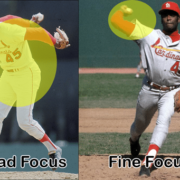
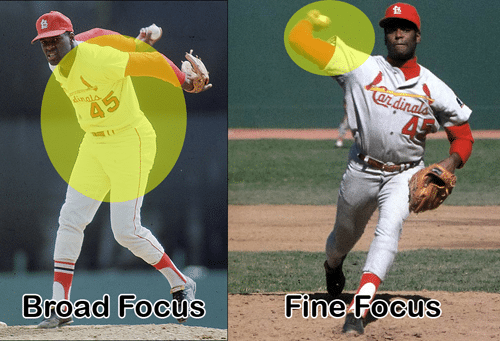


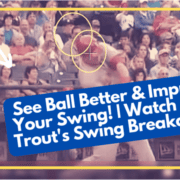


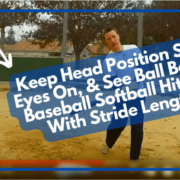
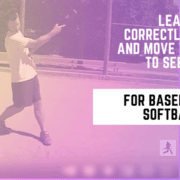
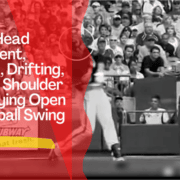



What a great swing and what great results. You wonder why this is not being taught more. I know I am.
I know Primo. It’s tough to sort through all the “white noise” online to find this stuff. But it’s out there 🙂 How’s Mia’s swing coming along?
Great subject Joey, and great analysis all around. I like they way you teach your players to either be a fisherman, or a hunter. It’s tricky for the hitter, but you can’t go up there guessing, and you can’t go up there and be overly aggressive either. Baseball is a funny game because the defense has the ball! In other games, the offensive team acts and forces the defense to be reactionary, but in baseball, it’s the offensive team that must re-act – and you can’t protect a lead by stalling and running out the clock! You must allow the offense it’s due at bats, and you need to throw strikes and get the 27 outs. Something people don’t realize, or overlook about JB, is that he’s not just a power hitter, but a power fielder as well. He’s one of those guys that Pitt probably looks back on and kicks themselves for letting go. Imagine him in right with Cutch in the middle? If you want to run bases hitting to that part of the field, it better go over the fense – because both of those guys have speed and can catch and throw it with the best that’s ever played. And then sandwich a good left handed hitter between them in the lineup and you’d have the start of a contender right there.
I agree Bob. Sometimes, these franchises don’t click with certain players. I think Pittsburgh was giving JB the wrong signal. I just think it was meant to be for Joey Bats in Toronto. Now, he’s got a lightning rod of a team. I think the Jays are going to do some big things in 2015.
The Bautista video is awesome! There are so many kids out there who don’t know how good they are or how much power they have. He changed his mindset and it completely changed his timing and also his swing plane.
Being “quick” is not what the best hitters do or think. Before the change he was static and then going as fast as possible to catch up. I have never seen a great hitter that looks rushed. You can’t be static in the box and then start up when the pitch is released. When you can see it happen in your mind before you swing, you won’t be rushed.
I totally agree Kyle. The video clip is such a HUGE insight into the turnaround of – what could be – a great hitting career for Joey Bats. You’re right, people don’t realize there’s a tempo, or cadence, to human movement. Whether you’re talking marathon running, 200 meter breast stroke, or Shot Put. I think in the book The Art Of War, Samurai Musashi talks about this a lot…if you run too fast, you’ll stumble.
I subscribe to every hitting blog, Twitter feed and have literally spent close to $20,000 of my own money over the last 10 years gathering information to build the hitting system that we use for our baseball facility and with our travel organizations hitting program.
At this stage in the game it takes very special nuggets to “make the cut” to enter it into our program. However, the information in this blog was fantastic. I will be using it in our program.
We teach a timing system that allows our hitters to determine when they begin the load phase of their swing on any given pitcher based on 3 different load categories. Those categories are negative move (Bautista for example), standard stride (just a simple center of gravity move forward) and an inward turn no stride (Edmonds and early Pujols).
Our hitters categorize each pitcher as a BP guy (average FB), a plus guy (plus FB) and a slow guy (slow FB) and then they are able to match their load type with the pitcher’s FB type to determine their load start point in the pitcher’s delivery. We obviously build in flexibility for inbetween load types and pitcher velos.
This system works amazingly well for our hitters and we’ve been able to get hitters that have never hit much and given them a tool that has allowed them to time up any pitcher, which gives them more confidence and in return more success.
Your blog takes our timing system and confirms it with a major league success story and then you add in the fisherman vs. hunter analogy, the broad vs. fine focus and the bow and arrow analogy and you’ve really created a bullet proof hitter without messing his head up with a bunch of mechanics stuff.
Don’t get me wrong, we teach mechanics as much as anyone, but once you start seeing live pitching the items in your blog need to take priority.
Great stuff. Thanks for sharing.
Again, I thank you Jason for the comment and am honored to hear this blog post added to the already great information you teach at your facility. I also appreciate you sharing some of your knowledge here. 🙂
Jason… I have been doing the same research you have been doing too… It takes a lot of time and I have changed my position on aspects of the swing over the years. I think if we closely look at what these guys do on high speed video, we can understand it fairly well. Of all the guys out there, I believe Joey Myers is the best on the internet for working with high level hitters. He does his own research and also isn’t too proud to change his beliefs on certain aspects of the swing. That’s why I’m going to stick with him here. The other guy is Nick Sapia in NJ. Nick and Joey share the same brain as far as I’m concerned. Nick is very busy but is located in NJ and does not do internet business. Nick would be good for a player who’s needs a face to face intervention on the East Coast.
Thank you Kyle for the compliment. And coming from you, it means a lot. Really, the variance research that has come out on how to train timing is really simple…set up two plates for the hitter to hit at – one set about 30-40 feet from the thrower, and the other set at 20-30 feet, for short over-hand toss sitting on a bucket. Have the hitter shift between the two plates every two swings. The thrower continues to throw the same speed. This jacks with the hitter’s timing. The results look like a circus in the beginning, but the hitters get very good at adapting later.
Joey –
Could you expand on your fisherman / hunter analogy? I’m with ya, but you need to flesh ot out a bit more. Does a more detailed discussion reside in another blog entry?
Thanks!
Joe B
Joe B., I picked this up from Bob Hall, one of my readers from Canada. The fisherman would be like Oakland A’s hitters who work counts. The hunter would be like Dominican hitters who stalk their prey. I use these interchangeably with my hitters, if a pitcher is wild, then the hitter becomes more of a fisherman. If the pitcher has decent command, then the hitter becomes a hunter. At the higher levels, hitters have to become more of a hunter. You don’t want always be taking on the first pitch at the higher levels because – what I’ve heard – is that a hitter’s average goes from .320+ on a zero-zero count, to .220 on a zero-one count. Does this answer your question?
Just like playing catch when you are a fielder, you don’t worry about trying to find the ball anymore than the catcher does catching it. You have areas you know to look in and be calm with it! Slow to fast for a reason!!!
Automatic pilot T.G. It’s hard for coaches, instructors, and parents to be patient with the learning process.
In line with fish/hunt, I teach my hitters to shrink the zone to the most probable pitch and location and be on time for that pitch. In high school baseball, the most probable pitch that a hitter is going to see is a fastball that is low in the zone, and most often away. So, with less than two strikes, we only swing on low fastballs low in the zone and try and elevate them. It is unbelievable at how few times we chase pitches now and at the increased quality of contact… Not every strike is a good pitch to swing at.
I totally agree! Thanks to one of the #1 pitcher golden rules to keep the ball down, this eliminates A LOT of pitch location guess work for hitters. More strategic coaches (and their hitters) will tear these pitchers apart.
Wat helps wit vision timing
This is my favorite vision/tracking post: https://hittingperformancelab.com/pitch-recognition-peter-fadde/ You can also click the “Topics” tab, then click “Vision, Tracking, Timing” link, and you’ll get all the post associated with that topic. Hope this helps!